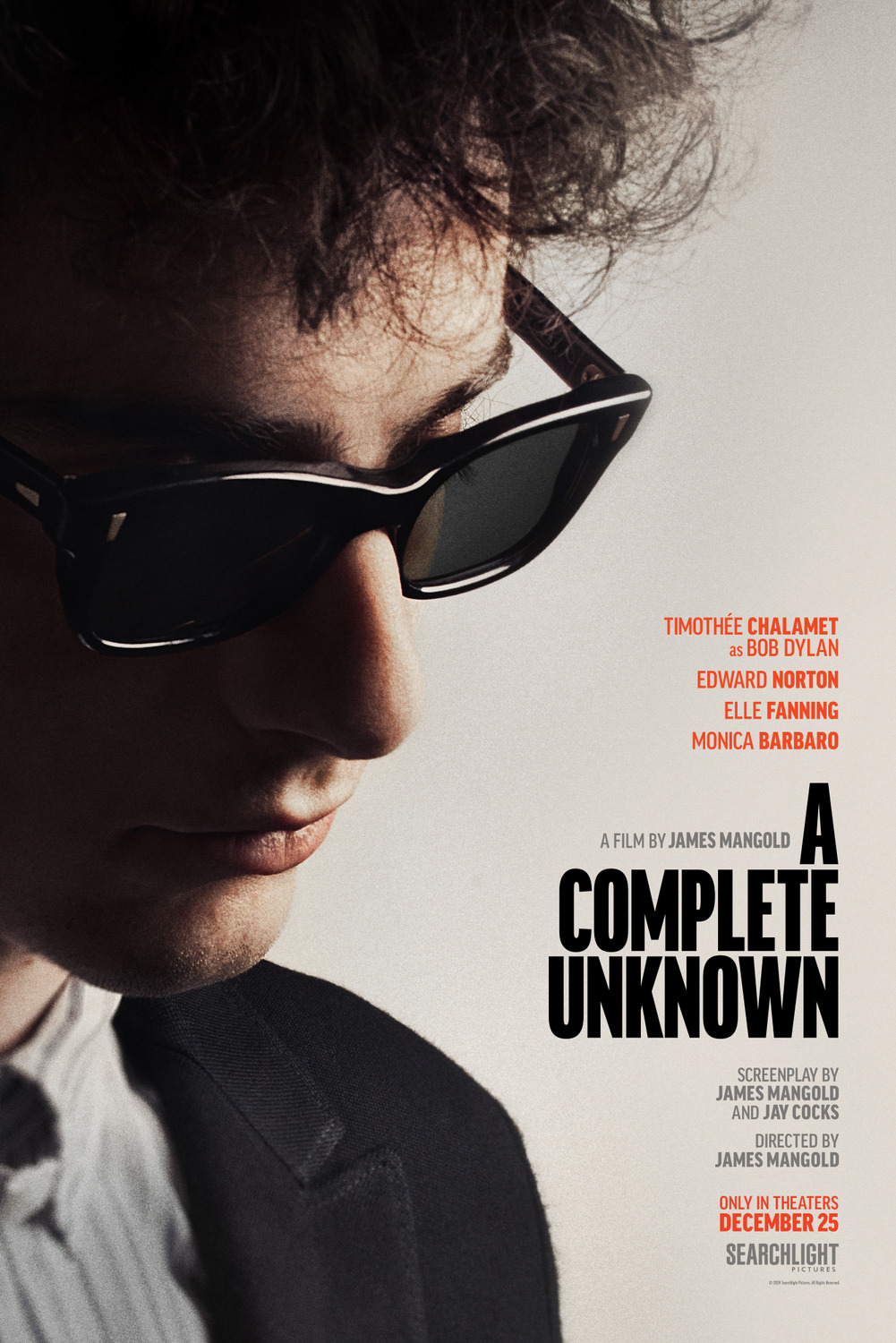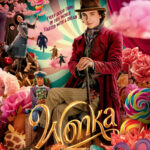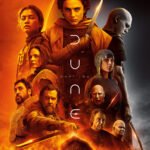Director
James Mangold
Starring
Timothée Chalamet
Elle Fanning
Monica Barbaro
Edward Norton
In 1961, the young Bob Dylan [Chalamet] arrives in New York to meet his idol Woody Guthrie. There he has a chance encounter with fellow musician Peter Seeger [Norton], who is impressed with Dylan’s unique sound despite his very young age. Getting a bit of traction with small gigs, Dylan quickly makes a name for himself, starts a relationship with Sylvie Russo [Fanning] and begins duetting with folk singer Joan Baez [Barbaro]. But as Dylan’s fame grows, he becomes disillusioned with the labels forced on him by his peers, and resents being expected to simply play the hits as he evolves his musical sound.
The beauty of all biopics is that, regardless of your prior knowledge or enjoyment of an artist’s work, you’re given an opportunity to immerse yourself in that individual’s world and feel the impact they had on others. But the story itself isn’t enough, you need a charismatic lead, demonstration of the significance of the setting (both in terms of time and location), and the ability to convey the importance of the subject matter as felt by those around them. Simply put: what made them a success and what made that success idiosyncratic? And while A Complete Unknown ticks a few of these boxes, it struggles with that last one because it keeps things somewhat hazy and at a distance; to emphasise the unknowable nature of the entity that is Bob Dylan.
This problem is unfortunately exacerbated by the fact that the format and formula of biopics as a whole have become stale in recent years. Although it has to be noted that they can be elevated significantly with a unique hook or approach to make them stand out. Rocketman, Better Man and even Elvis being exceptional examples of applying bold filmmaking to tell a very familiar story. And it’d be easy to argue that Dylan’s work doesn’t lend itself to that level of heightened absurdity, (meaning a by-the-numbers approach is inexorable) but that doesn’t explain how we already got the best Dylan-adjacent novel biopic nearly 20 years ago in I’m Not There.
In truth, A Complete Unknown is devoid of the necessary edge that makes the story worth telling. To the extent that, for the first hour, there’s no real conflict bar a soft emotional diminishment between Bob and his girlfriend Sylvie. In fact, nobody really gets close to Dylan (including the audience) in terms of his personal history, his songwriting ability, or through his various interpersonal relationships; meaning, by the end of the film we’re left with so little development to provide genuine closure. As such, it feels like the film wanted to illustrate two key drifts: between Bob and the people in his life, and between the fans who want more of the same and an artist who wants to experiment.
Firstly, let’s talk about those people in Bob’s life. It has to be said that each individual performance is fantastic. Chalamet feels born to play this role, Fanning is grounded and human (despite her character being a genuine historic figure in all but name), and Barbaro injects some much needed wry warmth. That said, Chalamet and Fanning feel like an ill fit – not as actors but the characters – even from the outset, Bob and Sylvie come across as somewhat incompatible and their on-again-off-again vibe therefore lacks any intensity. Even Bob’s tumultuous relationship with Joan is deprived of consistent emotion, giving us only moderate peaks and troughs. But for the lack of vim in his romantic life, there’s an element of contention in his friendship with Pete Seeger. There’s a beautiful glee and purity to Norton’s performance, giving us a sort of fatherly doting and humility, which is eventually shrugged off and left behind as Bob grows. It’s clear the pair are close but their divergence in musical taste strains the connection and gives us some of the movie’s strongest scenes.
Secondly, we have that aforementioned divergence. This movie is an adaptation of the book Dylan Goes Electric! and it therefore insists that the most interesting point of this man’s life and his influence lies in his evolution from acoustic folk singer, to electric multi-specialist. This isn’t a simple shift of equipment, it’s a defiance against the status quo, a refusal to settle, and the fight between artistic expression and corporate expectation – or so the film wants us to believe. The only problem being, it doesn’t spend enough time earning that. Sure, we have multiple background conversations about the futility of fans trying to categorise various songs and musicians into clumsy genres, but the so-called oppression of Bob’s sound (which if you’re not into Dylan, all sounds very similar) isn’t communicated well enough, meaning he just comes off as a bit petulant.
This leads to two notable live performances: the first is a touring gig wherein Joan and Bob are on stage together but he storms off after refusing to play “what the fans came to hear.” This resistance is abrupt and better suited as a commentary on the friction between Bob and Joan – but outside of that, there’s no real impetus for sparring with the audience. The second is the anti-cinematic-concert where we’d expect to close out the third act with a triumphant performance (think the over-indulgence of Bohemian Rhapsody), only to watch Dylan being heckled by contemporaries for debuting his new songs. It’s a novel twist but it lacks the requisite weight to appreciate the outrage. The man is getting bottled off stage, his friends are trying to take an axe to the sound system to stop his performances, but with hindsight it feels inflated and oddly absurd, rather than a natural evolution of stagnant forces.
I will, however, close out this review by highlighting that for all the narrative missteps, this film is a visual and technical treat. The lack of score work and the use of live recordings are brilliant. And when paired with the stunning cinematography, we’re presented with a setting that feels real and lived in. Further still, the hair, costumes, make-up, and production design all excel to populate this world with detail and life that demonstrate the power of a mid-tier budget put to outstanding use. So, is A Complete Unknown a disaster? No, far from it. It is, however, painfully hollow and an experience that doesn’t convey the significance it’s trying to showcase. Which wouldn’t be a huge problem if it weren’t for the demonstrably talented elements operating every facet of this film’s creation.
Release Date:
17 January 2025
The Scene To Look Out For:
One of the quieter moments comes during the mid-60s where a successful Bob Dylan is pulled in all directions. But despite this, he makes time to appear on Pete’s TV broadcast – granted, he was scheduled to appear and turned up late, but it’s treated like a gracing from on high, especially by Seegers. The simple interaction between Bob and (fictional) blues musician Jesse Moffette displays all the chemistry, charm, and passion for the craft that made Dylan such a powerful and alluring personality. You’ve got Dylan drawn to the music, indifferent to the cameras and audience, seasoned musician Moffette impressed with Dylan’s natural skillset, and the subtle adoration and support from Seegers. Simple, touching, effective.
Notable Characters:
Although he only appears in a handful of scenes, the big, boisterous personality of Johnny Cash is hard to escape. And considering Mangold has explored this character in great detail in Walk The Line, it’s nice to see this alternate take on him by Boyd Holbrook. The only real issue is that while watching his performance, you’re struck with the reminder that there’s a significantly superior film set in the same period that you could be watching.
Highlighted Quote:
“You’re pushing candles and he’s selling lightbulbs.”
In A Few Words:
“Executed magnificently on a technical level but fails to connect with the audience on an emotional level, which, when we’re talking about the impact of music, is the one that matters most.”
Total Score: 3/5

![The Red Right Hand Movie Reviews [Matthew Stogdon]](https://reviews.theredrighthand.co.uk/wp-content/uploads/2021/12/cropped-header1.png)



